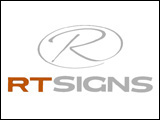The Swine Health Information Center says by stacking risk mitigation strategies pork producers can boost their defense against foreign animal disease.
Kansas State University has completed a Swine Health Information Center Assessment of tools to reduce the risk of introducing foreign animal and transboundary diseases in feed.
Swine Health Information Center Executive Director Dr. Paul Sundberg says scientists assessed the survivability of Classical Swine Fever, Pseudorabies virus and African Swine Fever in feed components under conditions that mimic transport from Asia and strategies to mitigate the risks.
One thing is to calculate the half life of the viruses and that translates into a holding time. There’s a certain regular degradation or inactivation of these viruses as they go through their natural life cycle in feed ingredients and they degrade or inactivate at a fairly constant rate and we can use that half life to calculate how long it takes to hold those feed ingredients such that the virus contamination that might be in naturally degrades.
Also we looked at the opportunity for various feed additives to inactivate these viruses as the feed additives are mixed in with the feed during processing.
Finally, I’ve got to include the additional mitigation possibility is to talk to the feed manufacturer or feed supplier about the sourcing of their feed components. If these feed components are coming from areas of the world that are free of these foreign animal diseases there can be high confidence then that those feed components are also free from those diseases.
~ Dr. Paul Sundberg, Swine Health Information Center
Dr. Sundberg says no single approach can guarantee contaminant free feed but stacking these strategies will provide multiple layers of protection.
The full report is available at swinehealth.org.



